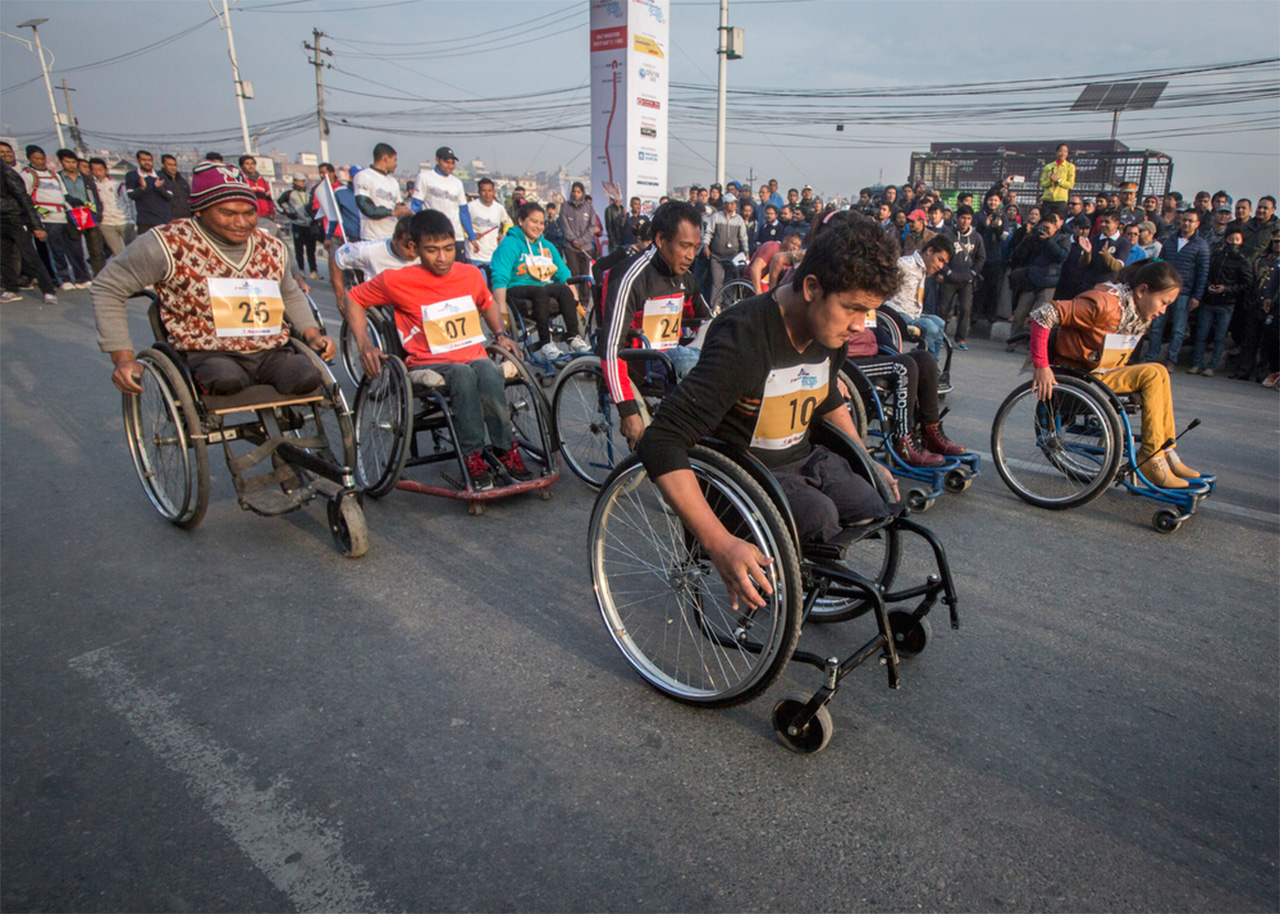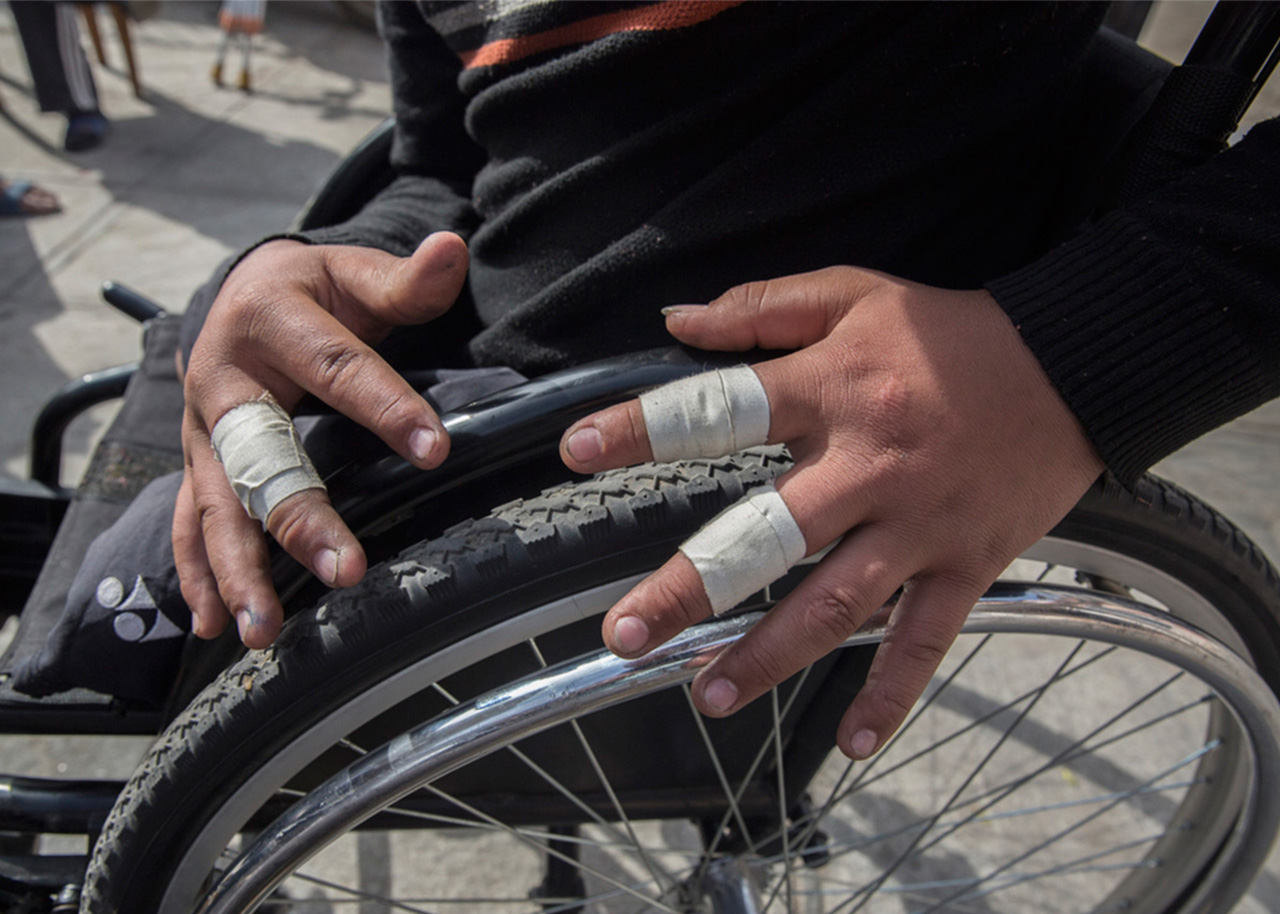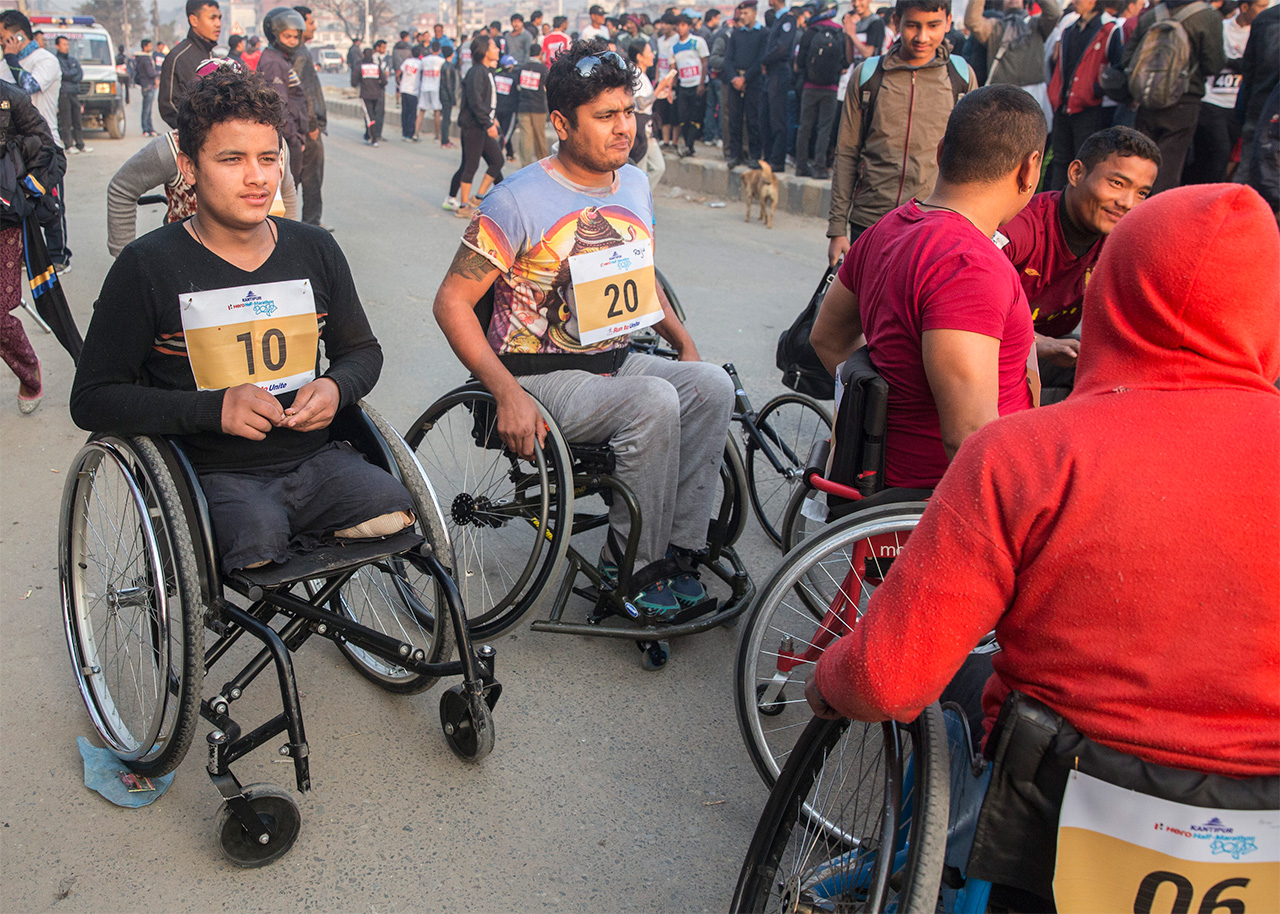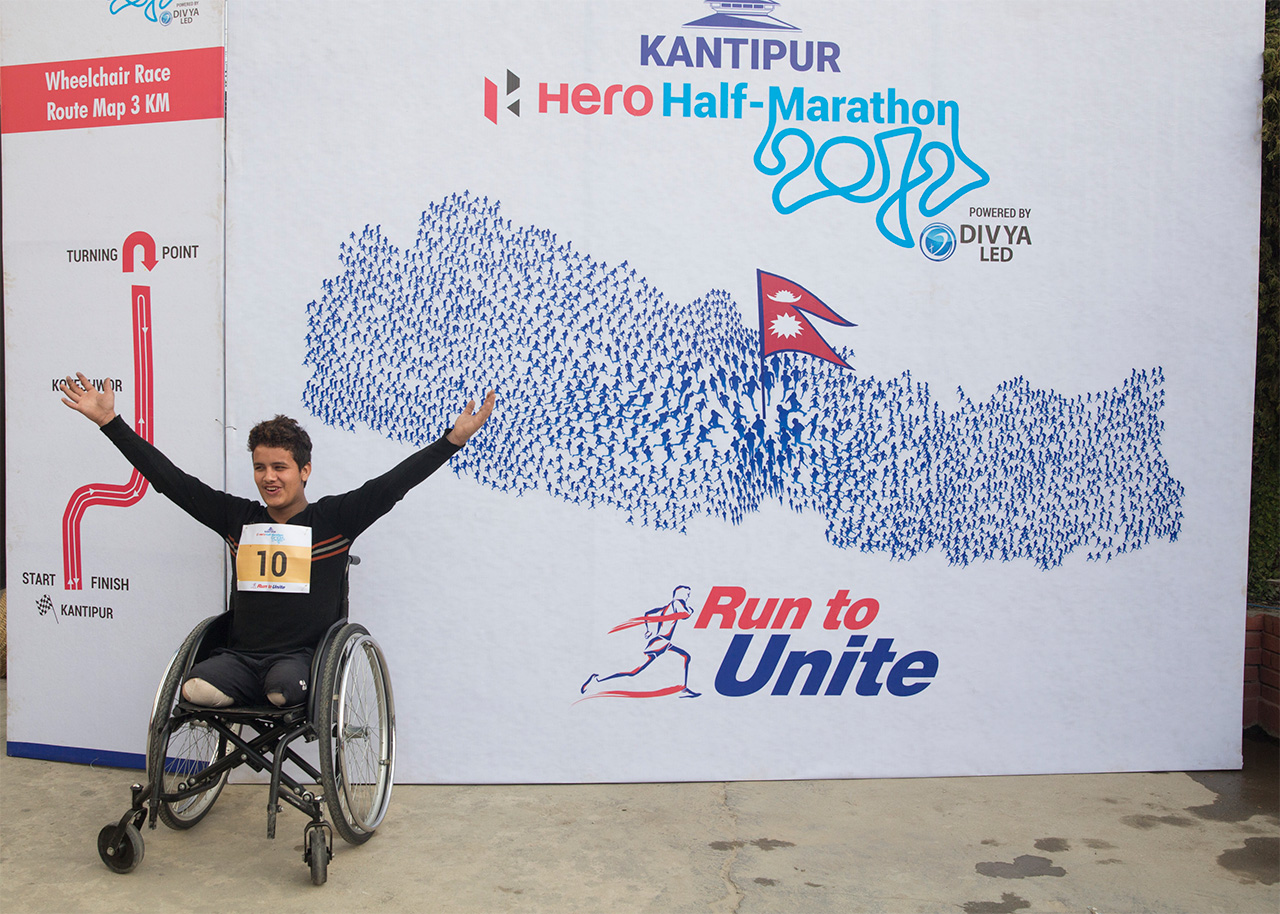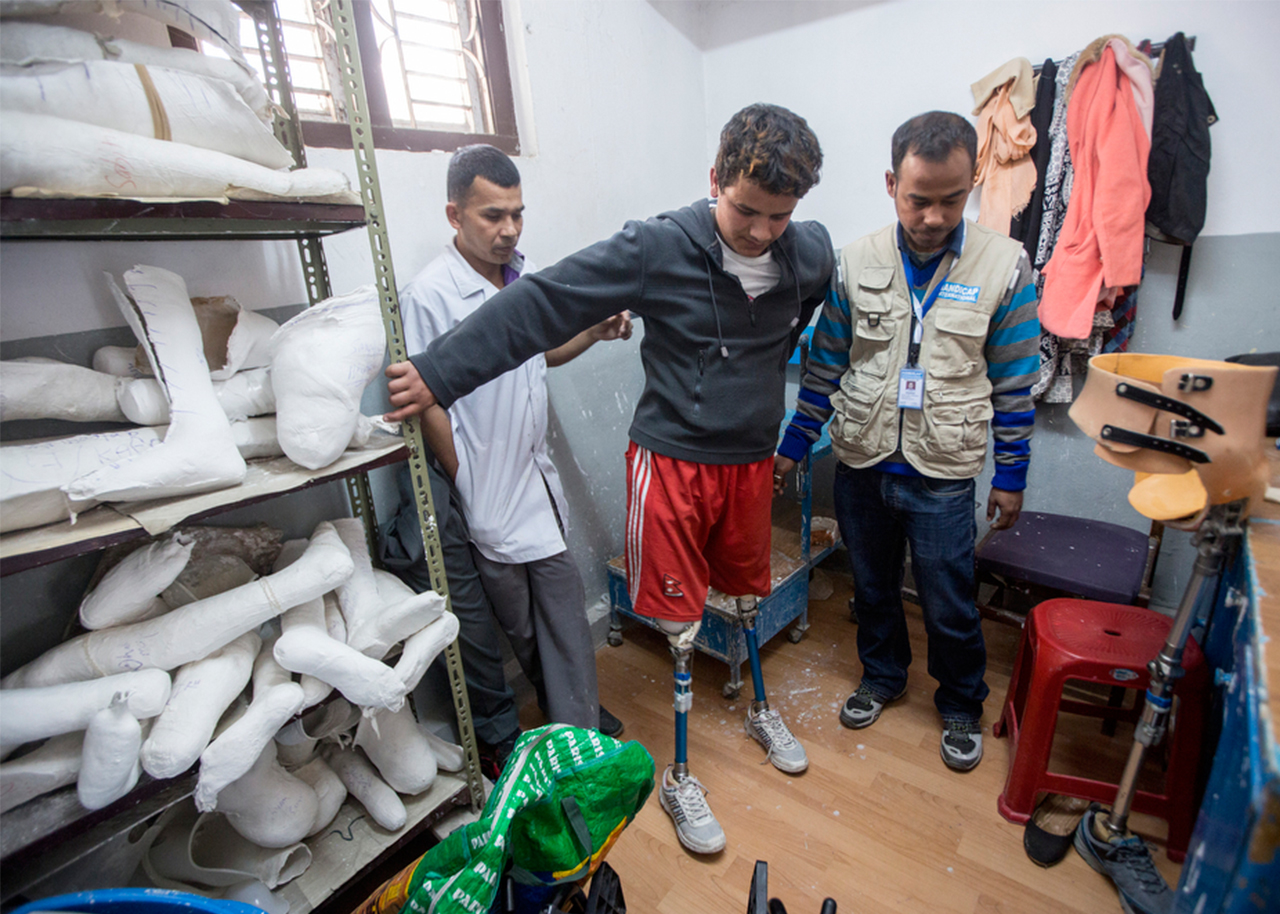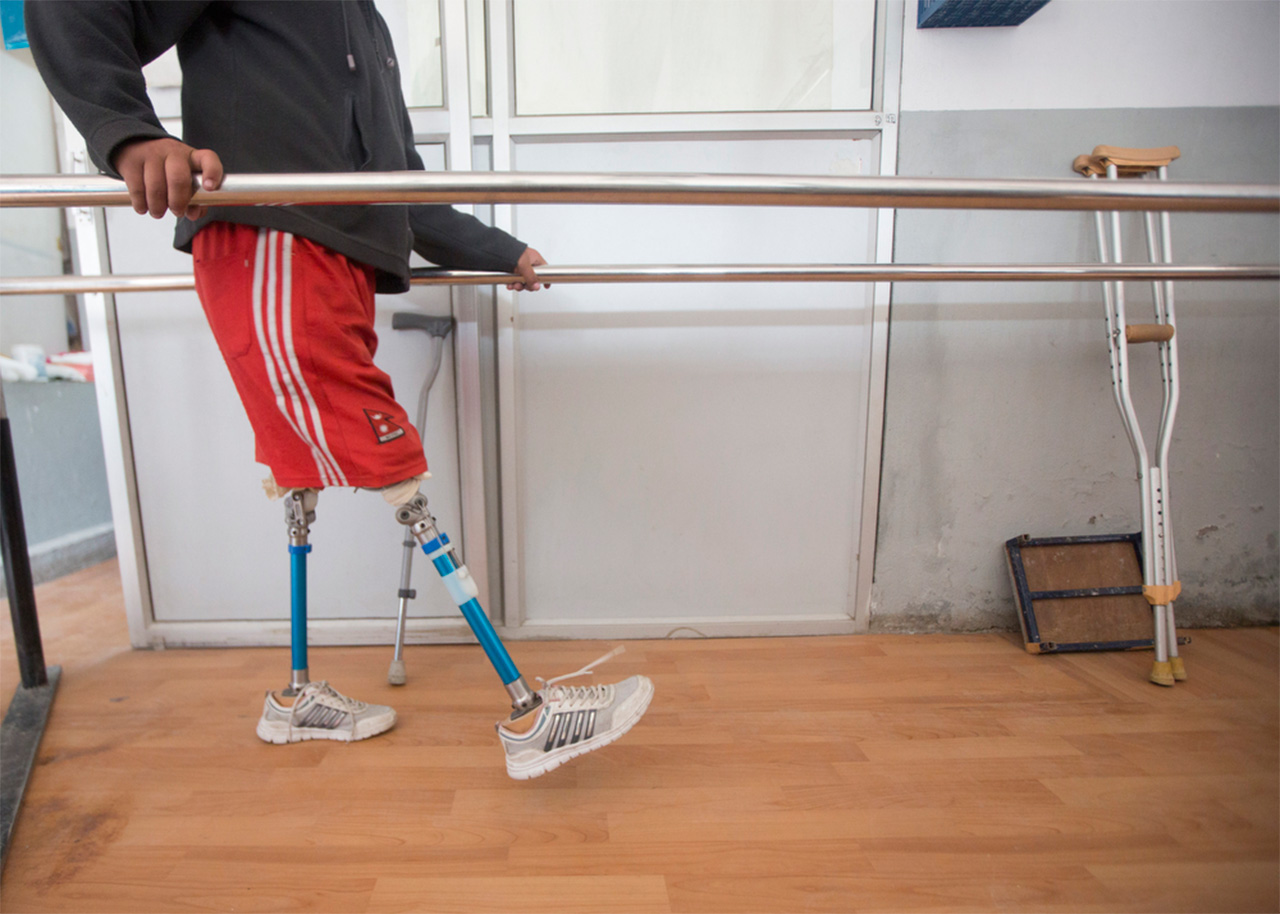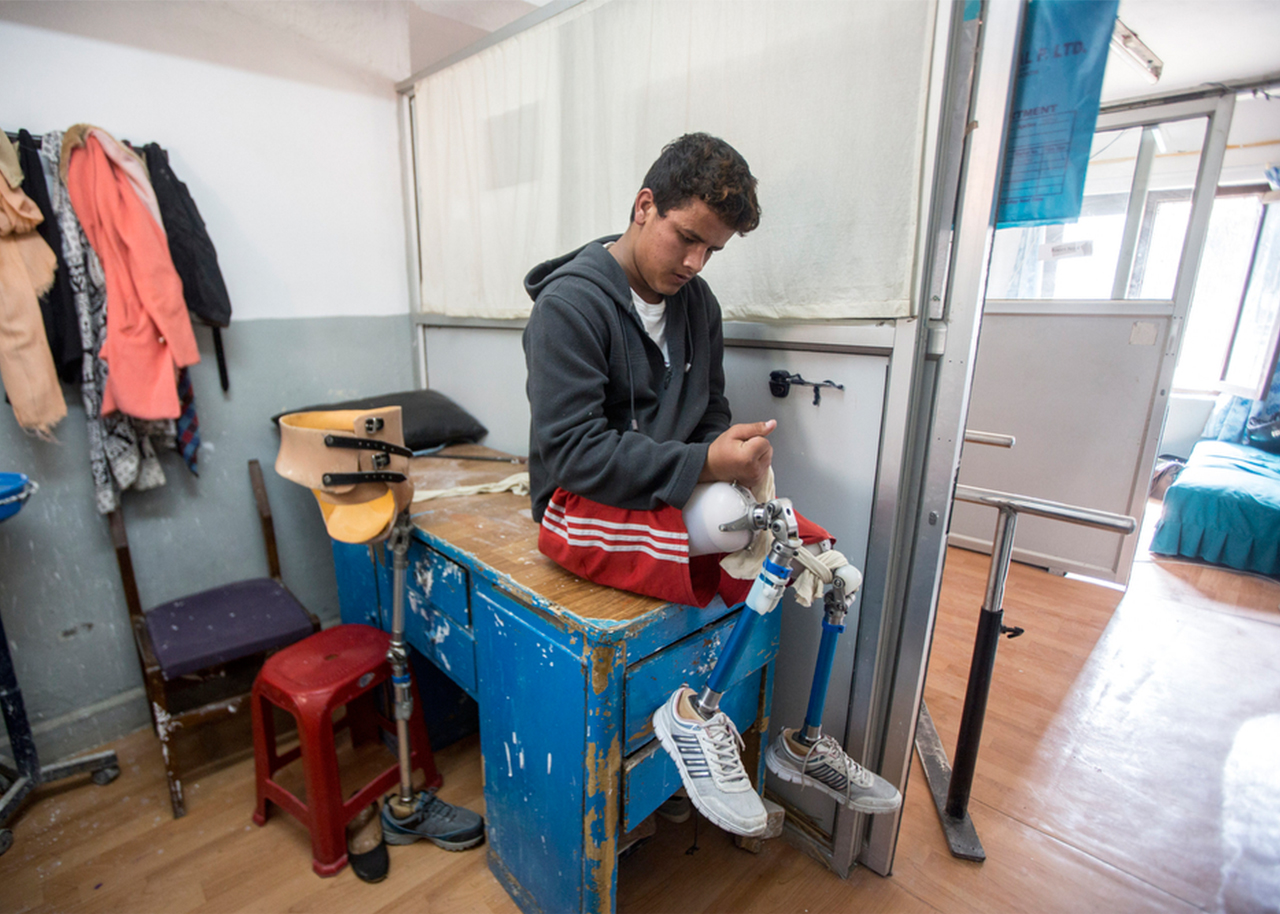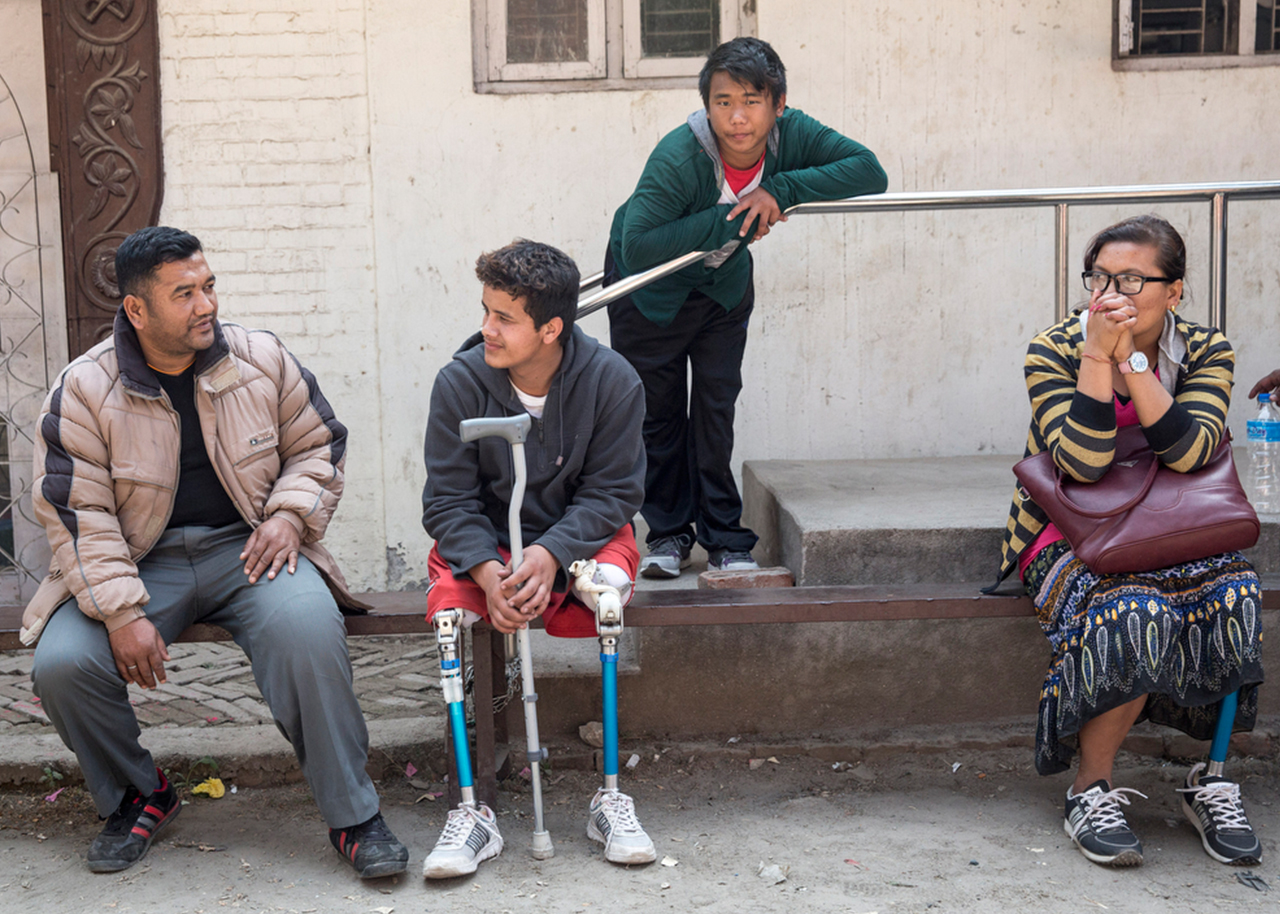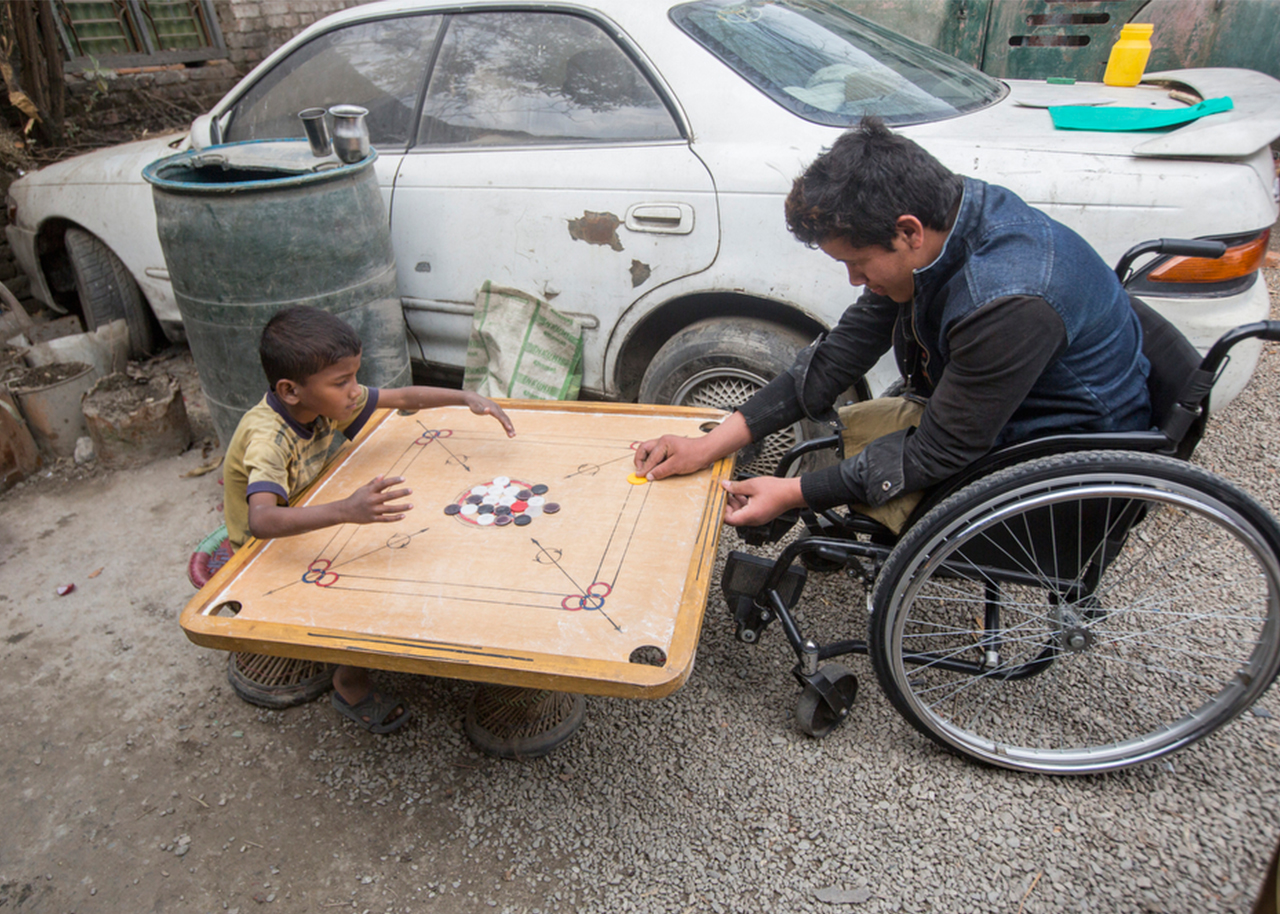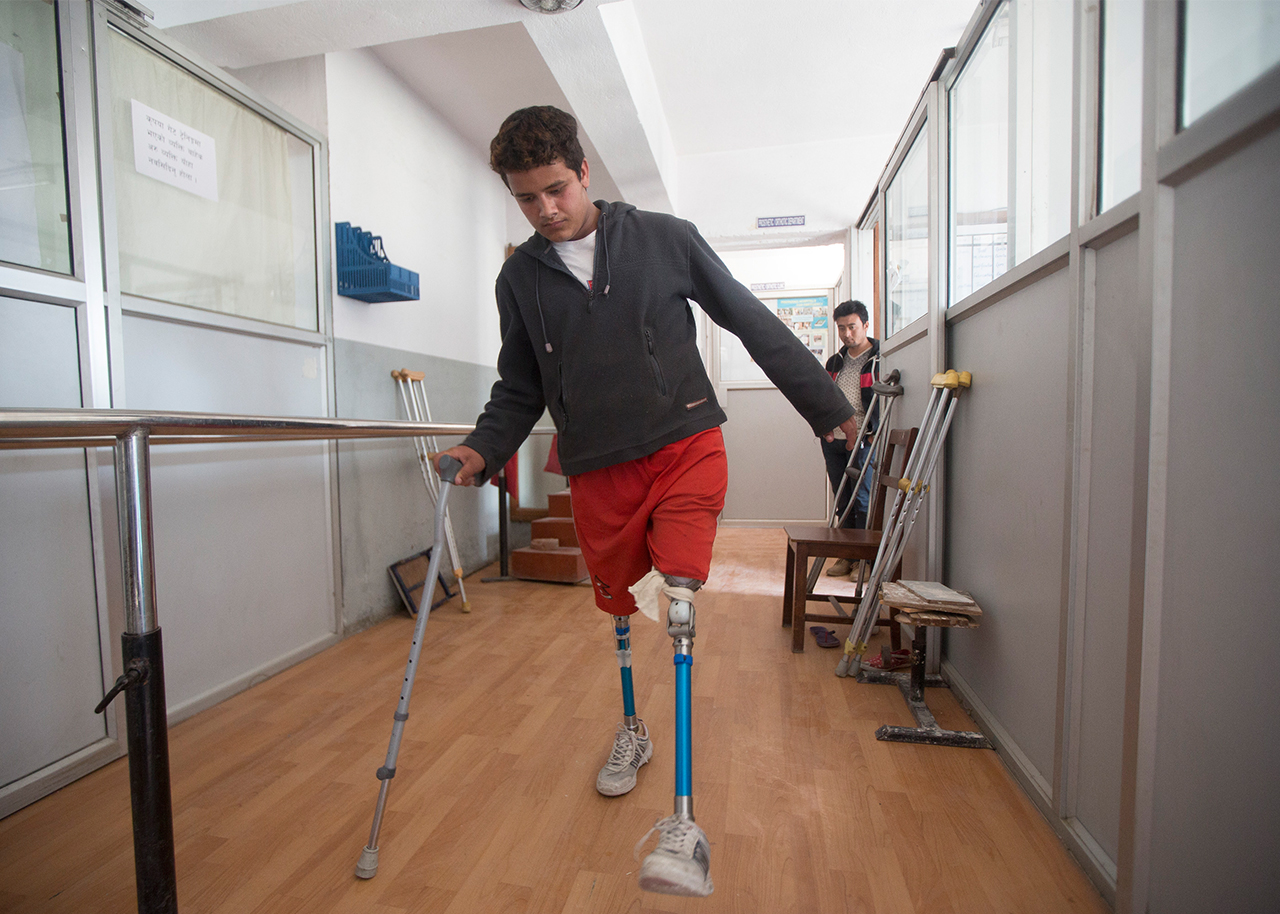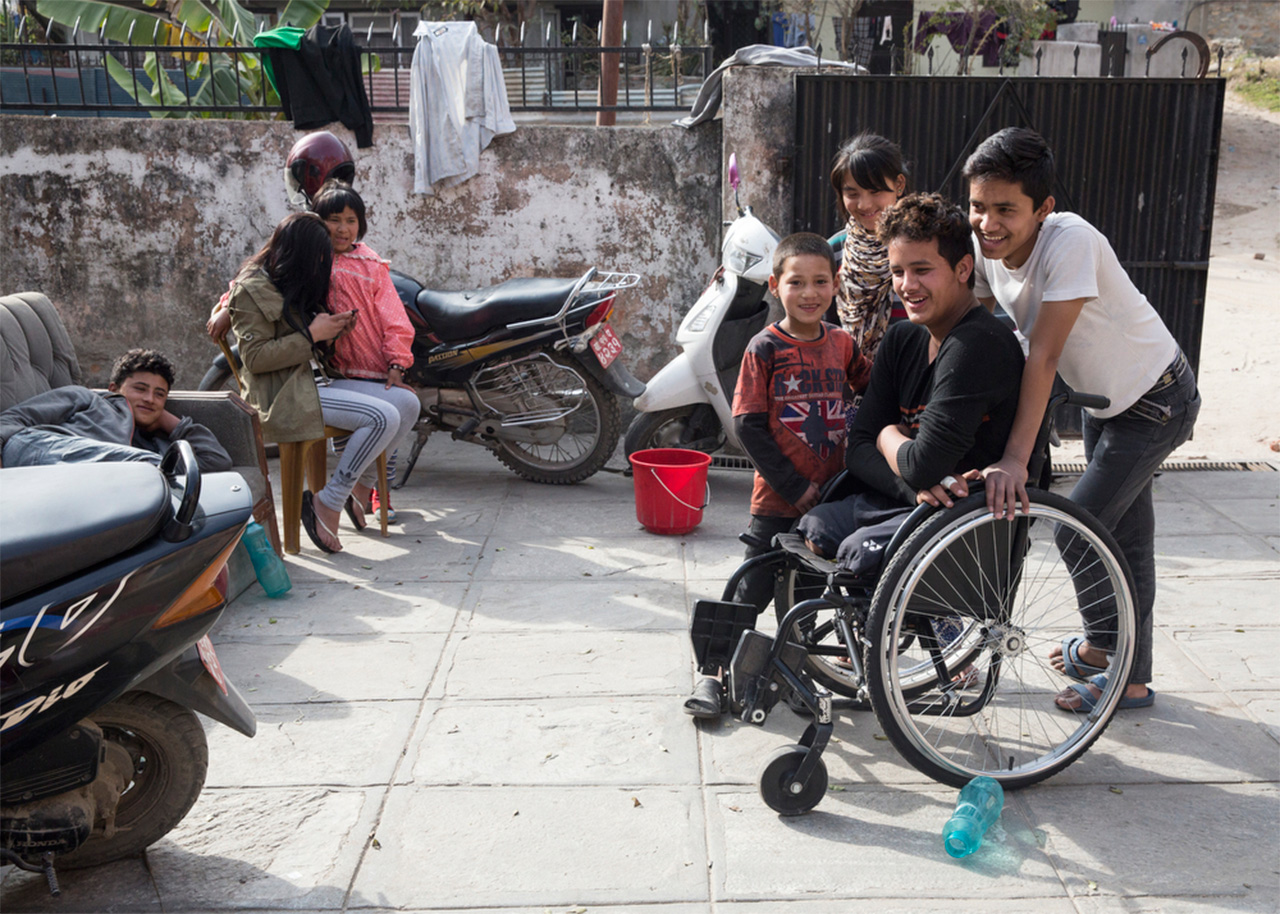The challenges of learning to walk again
The initial phase of Ramesh’s recovery was long - it took five months for him to get used to wearing prosthetic legs.
Yeti Raj Niraula joined Handicap International in September 2015, a few months after the earthquake. Yeti, a physiotherapist who specialises in prosthetics, talks about Ramesh’s recovery and the five months he has spent working with him.
"His kind of amputation is called a transfemoral amputation, that’s an amputation above the knee. We have fitted Ramesh with two prosthetic legs but it was a long journey to get him to this point.”
“Whatever height he used to be before has reduced, and it took us time to build the right height legs for him. He spent five months walking from the knee area to get him used to balancing again with the feet facing backwards to help support him.
“The relationship between us gets stronger over time. We don't just see a person once in the clinic and discharge them. We see them regularly over a long period of time.”
Although he has become highly skilled in his wheelchair, Ramesh now needs to focus on his walking. The recovery process for Ramesh will be a life-long journey. He will need prosthetics and aftercare for the rest of his life. As he grows and develops, his legs will need to be re-measured and adjusted and, from time to time, replaced.
Please make a donation today
Ever the optimist
Ramesh, like so many other young people in Nepal, was unable to return home to his family after the earthquake. He now lives in temporary accommodation in an organisation set up to help those who need long-term support. Ramesh is involved in everything. Whether it’s cleaning, cooking or just entertaining the other residents, he’s always there.
During the last 10 months both in the clinic and at the hostel, Ramesh has built close friendships with other earthquake survivors, particularly Amrit Magar, an 18-year-old amputee.
“He is ever the optimist", comments Samrat Singh Basnet, the owner of the hostel where Ramesh currently lives. "He's always there in the clinic, helping and encouraging people."
“He is peer counselling other earthquake survivors. There used to be girl who came in every day and cried until she met him. He gives other people courage” reflects Yeti.
It’s not been easy but I’m really trying to start again and adapt to my new life
The question now is the future and whether Ramesh will be able to return to education and find work.
“I don’t want to go home, there is nothing there for me now” explains Ramesh. “I want to study first and then I want to be a social worker to help other people like me. Whatever happened it happened. This is our future. We should start from here. We can start again even with our disability.”
“I just had to accept this new life I have been given without my legs. It’s not been easy but I’m really trying to start again and adapt to my new life.”
Published 04/05/16


